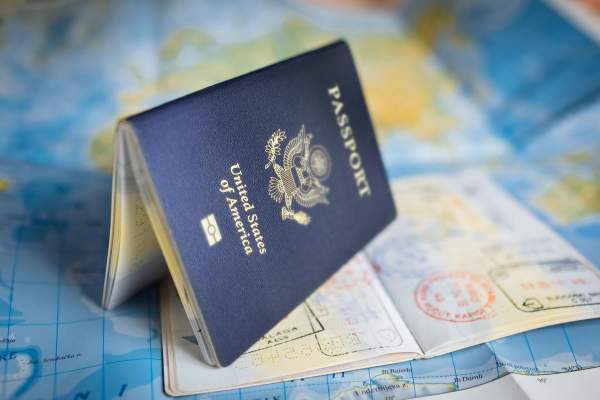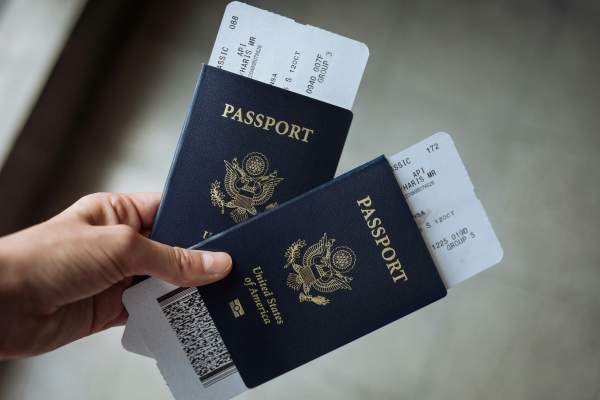
US Falls to Record Low in Powerful Passport Ranking
For the first time in two decades, the American passport has slipped to its weakest position yet in the global rankings, now ranking 10th in the 2025 Henley Passport Index. Once a symbol of elite global mobility, the U.S. passport continues its downward trend, marking a notable shift in international travel dynamics.
From Top Spot to Tenth: A Steady Decline
The latest edition of the Henley Passport Index shows that the U.S. has dropped three places compared to the previous year, continuing a decade-long decline from the No. 1 position it once shared in 2014. In this year’s update, the American passport now grants visa-free or visa-on-arrival access to 182 destinations, a slight drop from 186 the previous year.
While this still encompasses a large portion of the world, it's notably behind top-ranking Singapore, whose passport grants access to 195 countries, 13 more than the U.S.

Photo: unsplash.com/@globalresidenceindex
Global Mobility and the Power of Passports
The Henley Passport Index, maintained by London-based consultancy Henley & Partners, uses exclusive data from the International Air Transport Association (IATA) to rank global passports by the number of destinations accessible without needing a pre-arranged visa. It serves as a benchmark for how travel-friendly and diplomatically effective a passport is on the world stage.
How the U.S. Compares in 2025
This year, the U.S. finds itself tied in 10th place with Iceland and Lithuania. Although 182 visa-free or visa-on-arrival destinations still make it a powerful passport, it's falling behind several other nations. Singapore holds onto first place, while Japan and South Korea sit comfortably in second, with access to 190 countries.
European nations also dominate the top tiers, with Germany, France, and Italy among those offering entry to 189 destinations or more.
What’s Causing America’s Drop?
Experts attribute the decline to a lack of expansion in visa-free access. Since 2014, the U.S. has added only eight destinations to its tally. Meanwhile, countries like Japan have expanded significantly—adding 19 destinations over the same period—allowing them to climb in the rankings.
Another factor is the imbalance in visa policies. While the U.S. passport allows entry to many nations, only 46 nationalities are granted visa-free access into the United States. This asymmetry likely plays a role in the downward shift, as reciprocity is a key factor in Henley’s scoring system.

Photo: unsplash.com/@globalresidenceindex
What the State Department Says
Despite the decline, the U.S. State Department remains confident in the strength and reliability of the American passport. It emphasizes that policies are based on security and mutual agreements, primarily through the Visa Waiver Program, which includes 41 partner countries.
The department underscores that its focus is not only on accessibility but also on ensuring safe, secure, and mutually beneficial travel.
How the Passport Index Is Calculated
Each passport is awarded one point per destination it allows entry to without a pre-departure visa. This includes visa-free travel, visa-on-arrival, or electronic travel authorizations (ETAs) that don’t require government approval in advance. If a destination requires an application or government authorization before travel, that destination doesn’t count toward the passport’s score.
Top 10 Passports in 2025
Here’s how the rankings stack up this year:
1. Singapore – 195 visa-free destinations
2. Japan, South Korea – 190
3. France, Germany, Italy, Spain, Finland, Denmark, Ireland – 189
4. Netherlands, Portugal, Sweden, Norway, Belgium, Austria, Luxembourg – 188
5. Switzerland, Greece, New Zealand – 187
6. United Kingdom – 186
7. Australia, Czechia, Hungary, Poland, Malta – 185
8. Canada, Estonia, UAE – 184
9. Croatia, Slovakia, Slovenia, Latvia – 183
10. United States, Iceland, Lithuania – 182
A New Era for U.S. Travelers
While the U.S. passport still affords substantial freedom, its relative power is diminishing in comparison to that of other global players. For frequent travelers, the shift may seem subtle, but it signals broader geopolitical trends and evolving standards in international diplomacy.
For now, American passport holders can still enjoy broad access worldwide—but the message is clear: maintaining a top-tier passport requires constant diplomatic engagement and cooperation.


